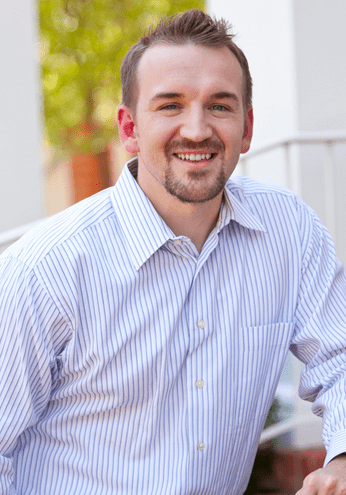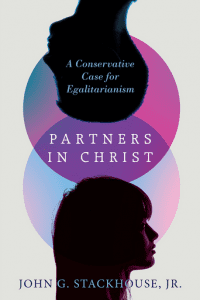Gary G. Hoag. Wealth in Ancient Ephesus and the First Letter to Timothy: Fresh Insights from Ephesiaca by Xenophon of Ephesus. Winona Lake: Eisenbrauns, 2015.
A review by Lucy Peppiatt.
Gary Hoag revisits the topic of wealth in the letter of 1 Timothy, asking whether the teachings found there are consistent or inconsistent with other teachings in the NT, or whether it might be a mixture of the two. Scholars are divided on this question. Hoag’s findings rest on cross-referencing the terms in 1 Timothy with a novel, Ephesiaca by Xenophon of Ephesus. This novel was originally thought to have been written in the 2nd or 3rd century CE, but having been recently codified as an ancient Greek novel of the mid-first century CE, we now know that it was written at the same time as Paul’s ministry as portrayed by Luke in Acts. It’s a valuable source in shedding light on the social setting or Sitz im Leben of the letter, and Hoag studies in particular five passages: 1 Tim 2:9-15; 3:1-13; 6:1-2a; 6:2b-10; 6:17-19.
Hoag’s method is to take this ancient evidence in Ephesiaca alongside other ancient evidence and then to employ a socio-rhetorical methodology developed by Vernon K. Robbins to come up with fresh insights on 1 Timothy. He studies the texts assessing the following in relation to the language and ideas in the letter: inner texture, intertexture, social and cultural texture, ideological texture, and sacred texture, which are reordered slightly for Hoag’s reading. In short, Hoag subjects the passages above to multiple lenses in order to discern how terms and themes may have been understood in antiquity, and very specifically in Ephesus at the time of Paul. He then presents his conclusions. Hoag argues extremely clearly and concisely, taking the reader on a journey through possible options for interpretation, presenting his findings, giving us his own thoughts and conclusions, before discussing a few implications. As a doctoral thesis, it is rigorously and thoroughly researched, but it is also readable and accessible to anyone who might be interested, and, in my opinion, is a hugely valuable resource.
Hoag argues convincingly for the importance of the novel as new evidence for the Sitz im Leben of 1 Timothy, mainly through demonstrating how Ephesiaca paints a world that we don’t have to look hard to find in our letter. Apologies for upcoming spoilers on the novel – look away if you don’t want to know what happens in the end!
Ephesiaca itself is a love story of two beautiful young people from Ephesus (Anthia and Habrocomes) who, like all their contemporaries, are both devoted to Artemis. It traces their passionate first meeting at a ceremony to Artemis in the temple, where Anthia leads a procession of young women (all dressed as the goddess), into the temple. The novel traces the falling in love of the two god-like youngsters, their lavish and very public marriage, their subsequent adventures and perils which lead them to be hazardously separated before finding one another again, older and wiser, through fortuitous and previously foretold circumstances. Their slave couple, Leucon and Rhode, travel with them and are deeply involved in their story. At one point the slaves come into wealth, which they then hand over to Habrocomes and Anthia in the end. The four are reunited on the same terms as they had always been.
Ephesiaca gives us a window into Ephesian life, the cult of Artemis, the function of the Artemisium, codes of shame and honor, attitudes to wealth, women, slaves, and benefaction. Word studies reveal significant overlap in the use of certain words in both 1 Timothy and Ephesiaca. Through his study, Hoag demonstrates six fixtures or social institutions that embody the cultural norms and rules that governed life and society for rich Ephesians: honor/shame, identity, kinship, exchange/benefaction, envy, and purity. He spells out the following: (1) rich people were expected to behave honorably and with modesty; (2) relationships (i.e. who you were related to and how), and not wealth, determined identity; (3) kinship ties were strong, protective, and paternalistic. Female honor was embedded in the honor of a male. He concludes that honorable wealthy Ephesians valued kinship over wealth, whereas the greedy in antiquity placed gaining wealth over kinship ties, and envy was regarded as the ‘most insidious evil to threaten human relationships’. (p.56) One of his key points is that Artemis ‘not only owned the rich and expected their support, but they, in turn, owned Artemis.’ (p.32) The link is inextricable.
It is into this context that Paul’s gospel was first preached, and the context that Timothy will minister in, with Paul’s advice ringing in his ears. I would really recommend reading this book for yourself, but here are some of Hoag’s key conclusions.
The first is in relation to the verses on women, which is where Hoag begins his book, because central to his argument is that the author has women of wealth who have come out from the Artemis cult in view here. So often, so many of us have thought that these verses cannot truly be made sense of unless we had a better understanding of Paul and Timothy’s context, and many have offered possible solutions. As Hoag rightly points out, most scholars agree that ‘social and religious realities associated with women lurk in the shadows’ of these passages. Hoag is contributing to this debate. What does he add?
I was persuaded that Hoag provides a better understanding, and one which I do think helps us to move forward in attempting to fathom the advice to Timothy. Bringing evidence from Ephesiaca to bear on the verses on women throws up a number of helpful cross-references to the situation at the time. This is in relation to the dress codes for women, the call to learn in quietness and submission, the use of the word αὐθεντεῖν, the reference to creation, and the very mysterious reference to childbearing, all of which are problematic. He does not claim that Ephesiaca provides conclusive proof, only valuable clues. However, one example of the clues he provides is that ‘nearly every word in 1 Tim 2:9-10 appears in Ephesiaca.’ This is not insignificant.
The picture that Hoag offers is that whole context for these verses is the Artemis/Isis cult and the prominent part that women play in this. First Hoag demonstrates that the dress codes stipulated for women by Paul are most likely linked to an injunction regarding women imitating and dedicating themselves to Artemis, as would have been common practice in the temple.
(1) The term πλέγμασιν, “plaits or braids,” in v. 9 is a rare term and is one of the words found in Ephesiaca referring specifically to the hairstyle of Ephesian women who served Artemis as they imitated her hair and clothing. In Hoag’s opinion then, the women were not being told not to dress either like the ‘new Roman women’, or like prostitutes, as some scholars suggest, but were being told no longer to dress as they would have done to serve Artemis. They were to leave this behind on conversion.
(2) This is supported by the instruction to avoid wearing ἱματισμῷ πολυτελεῖ, “costly clothing,” which we know the women wore when participating in cultic activities. In Ephesiaca, we find these cultic activities led by prominent and wealthy women.
(3) Hoag compares the countercultural expectation of exhibiting modest decorum and doing good deeds motivated by θεοσέβεια, “piety to God,” in our letter with the setting in which women were expected to dress to imitate the goddess and perform good deeds out of εὐσεβεία, “piety,” to Artemis and the gods.’ (p.99)
This leads us on to the knotty issue of whether Paul is telling Timothy to prevent all women from authoritative teaching in the presence of men (ever), or whether Paul is addressing a specific issue in Ephesus and what his reasons may have been for this.
What is the evidence from Ephesiaca regarding the behavior and piety of the women in Ephesus? Hoag reveals that the women are assertive, competitive, vocal, and well-versed in their religion. ‘They recite prayers, serve piously, and fiercely compete to attain various religious roles linked to their adornment and activities.’ They ‘assertively promote the Artemis myth and proudly receive the worship of the goddess who is mysteriously linked to Isis.’ (p.88) This link to Isis is important.
As is well known, Ephesian women were expected to serve Artemis, but Hoag also establishes a link between Artemis and Isis, demonstrating that the two myths were blended in Ephesus in antiquity. Women served the goddess piously for fear of vengeance from the goddess herself, and were well-versed in their religion. The result was that women were actively engaged in also propagating the Isis myth in which Isis deceives Ra and usurps his authority to obtain power and greatness. Alongside the Artemis myth that alleged that the goddess, the woman, was the author of man, Hoag posits that this explains the use of the word αὐθεντεῖν in 1 Timothy in relation to women teaching. So rather than make a decision as to whether this means to ‘exercise authority’ or ‘domineer’ or whether this is a word that is more linked to ‘author’ or ‘originator’, Hoag suggests that it pertains to all three. The prohibition on teaching is against the teaching of heresy linked to the Artemis/Isis cult. ‘Women must cease propagating the heresy that promoted the woman as the usurper of authority from man, the woman as the originator of man, and that man was the one deceived in the creation account.’ (p.228) These verses are aimed at the teachers of heresy.
On the salvation through childbearing, he discusses the fear of a woman who had abandoned the cult believing that she was in danger of vengeance from the goddess of childbearing. Serving God instead would hold perceived risks and fears for women who bore children. Hoag suggests that 1 Tim 2:15 offers hope instead of fear for women in this context, and that they could exhibit this trust in God by persevering in ‘faith, love and holiness, with modesty’ rather than returning to their old ways which would indicate that they are still worshipping Artemis/Isis, and living in fear of the goddess.
He concludes, ‘The construct of the statement in 1 Tim 2:12-14 alongside this leading belief from the world of Ephesiaca seems to demonstrate that the author of 1 Timothy is demythologizing the Ephesians’ thinking and setting the record straight.’ (p.91)
The call to learn in quietness and submission and the prohibition against teaching is thus framed, in his opinion, by verses that provide quite clear evidence that this section of the letter is targeting heretical thought and practice imported into the fledgling Ephesian church via the wealthy women from the Artemis/Isis cult.
In the second half of the book, Hoag discusses the connection between false teaching, greed, status, honor, and love of money presented in our letter and draws numerous parallels with ancient Ephesus, expanding this to leaders in general. ‘Ephesian evidence and Ephesiaca portray greedy religious leaders linked to Artemis and the gods as pious pretenders serving for shameful gain.’ (p.230) In Ephesus, the rich nobility ‘owned’ the religious leadership roles, and vice versa. Serving the cult was linked to wealth, status, and honor, and a means of amassing even more wealth. 1 Tim 3:1-13 would have radically countercultural and subversive implications in this context. The leaders of God’s church, in contrast, are to shun greed and to give up the benefactor model of the temple in exchange for the posture of humble service. Christians do not give of their wealth to gain honor and status, but in order to serve the body. Their service is for God’s glory and not for their own personal gain. Thus, the ‘1 Timothy polemic may be targeting the thinking and behavior of the wealthy who sought to preserve their roles and the religious reputation of Ephesus.’ (p.230)
He draws together the themes of the behavior of wealthy Ephesian women and the cult through his examples of Dorcas, Lydia, and Priscilla. These three wealthy Christian women use their riches for radically countercultural ‘good deeds’ compared with the kind of uses of wealth that we see in Ephesiaca for serving of the goddess and for building one’s own reputation and honor. They ‘epitomize the expections of rich Christian women in 1 Tim 2:9-15.’ (p.98)
The wealthy Ephesian Christians (including the women) are called upon to give up the link between Artemis worship, wealth, status, honor, and protection and instead to devote their wealth to serving God with ‘good deeds’. Followers of Jesus Christ would lose the privileged position of the cult, and may have to be prepared to be content with basic provisions.
Hoag concludes that 1 Timothy is consistent with NT teaching on wealth through the central theme of ‘God as benefactor’ which runs as a thread through the NT and is manifest in this letter. In his view, equality is in view as Christians are called to share resources, to give generously, and as both slaves and masters equally partake in God’s beneficence.
 I was sent her book by a man who had taken our open online course that we run at our college, while living in South Africa. He had then seen an interview with me on my work on 1 Corinthians, and he thought I would like her work. I’d never heard of her. He rescued her book, God’s Word to Women, from the ‘throw out box’ of a South African seminary.
I was sent her book by a man who had taken our open online course that we run at our college, while living in South Africa. He had then seen an interview with me on my work on 1 Corinthians, and he thought I would like her work. I’d never heard of her. He rescued her book, God’s Word to Women, from the ‘throw out box’ of a South African seminary.













